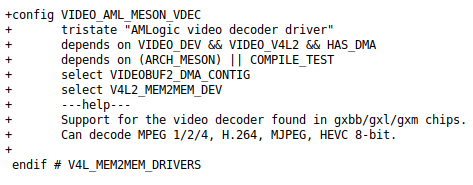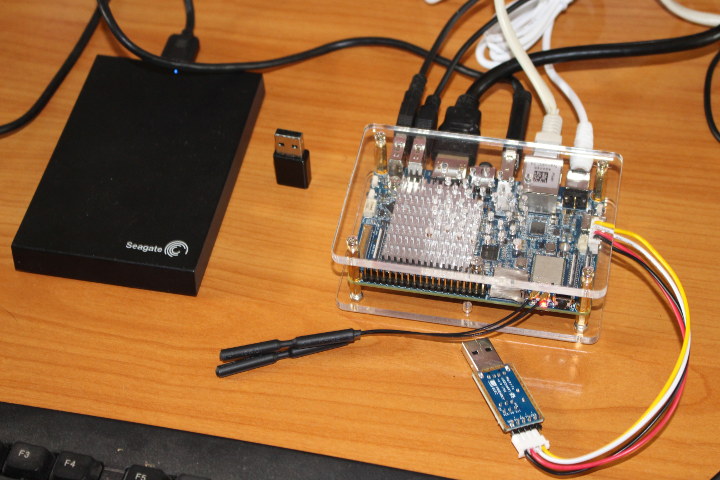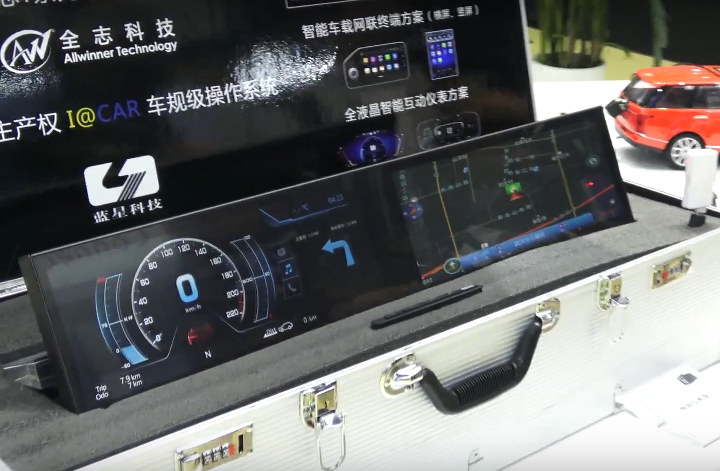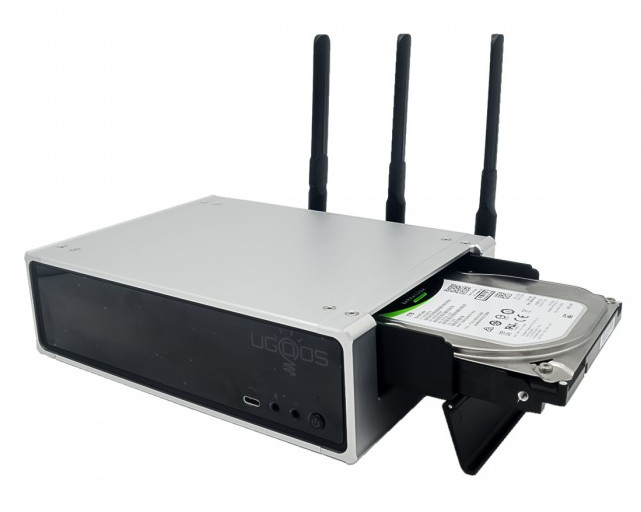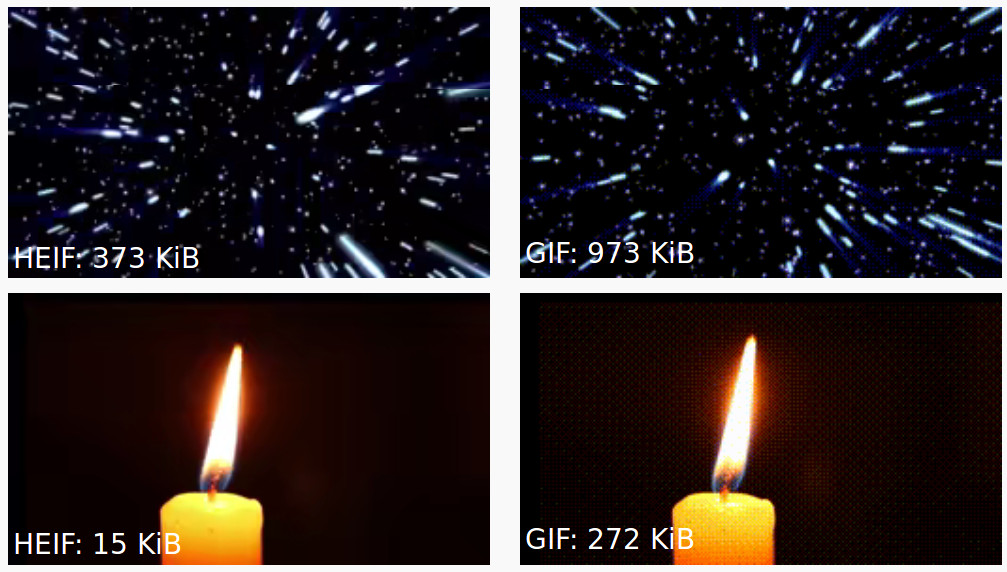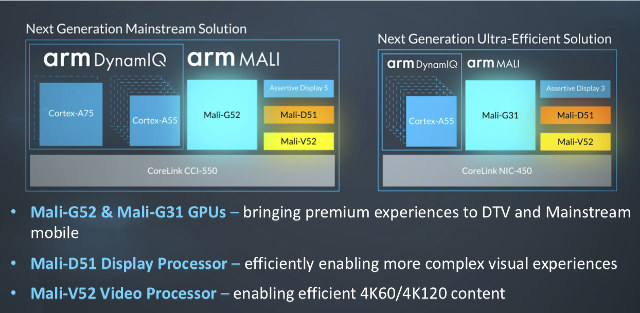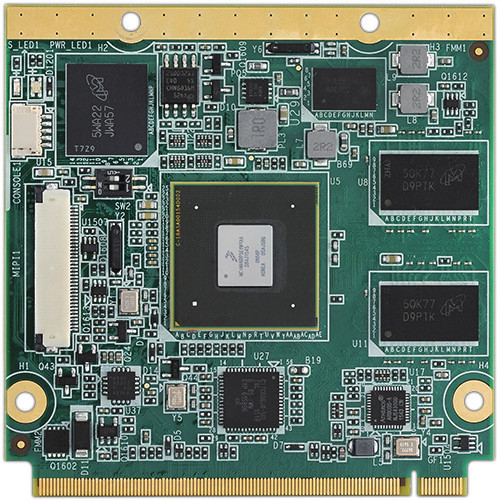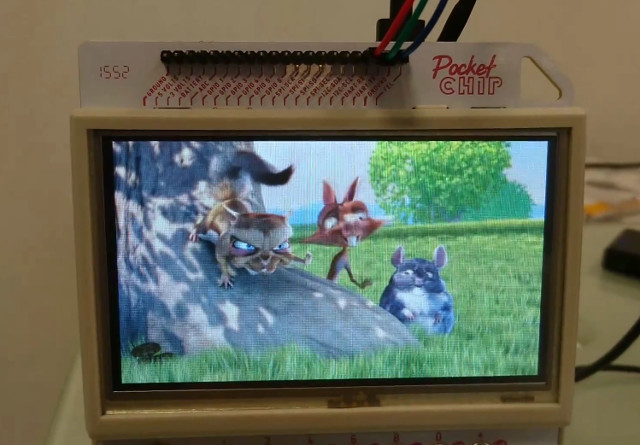Allwinner processors aren’t the only ones getting an open source hardware video decoding / encoding support in Linux, as Maxim Jourdan recently submitted a patchset to Amlogic Linux mailing list adding a video decoder driver to some Amlogic processors. The driver is written around the V4L2 M2M framework and currently supports MPEG 1/2/4, H.263, H.264, MJPEG, and (partially) HEVC 8-bit codecs. The driver has been tested with FFmpeg, GStreamer, and Kodi, and currently works on S905 (Meson GXBB), S905X/W/D (Meson GXL), and S912 (Meson GXM) processors. Those processors also support HEVC 10-bit, VP9, and VC1 codecs, and while those are implemented yet, they should be in the future. A separate commit adds support for “Overlay plane for video rendering” which support various YUV layouts and a non-alpha RGB32 layout, and will be useful for Kodi and LibreELEC ports. I came to learn about those two patchsets thanks to Neil Armtrong […]
NanoPC-T4 Review with Android 7.1 Firmware
NanoPC-T4 is one of the many Rockchip RK3399 SBCs now available, and as we’ve seen in the “unboxing review” the company sent me two samples. So far, I’ve been reviewing RK3399 boards with Linux distributions in posts such as “Checking Out Debian and Linux SDK for VideoStrong VS-RD-RK3399 Board” and more recently “AIO-3399J Development Board Review with Ubuntu 16.04“. But in this NanoPC-T4 review, I’ll switch to Android, specifically Android 7.1, as I’ll soon try Android 8.1 on Firefly-RK3399 which might make for an interesting comparison between the two versions of the OS, before switching to Linux with Pine64 RockPro64 board which I received yesterday. First Boot with NanoPC-T4 Development Board I had already assembled the board in the first part of the review, so I just added the two WiFi antennas, the optional USB to serial debug board, and connected various accessories and cables from left to right: USB […]
Allwinner T7 Automotive SoC Complies with AEC-Q100 Grade 3 Specifications
Allwinner T-series processors such as Allwinner T2 are designed for the transportation / automotive market for products like smart rear-view mirrors, infotainment systems, and navigation systems. While the company’s offered wide-temperature range support, AFAIK they did not have a part that had an actual automotive certification so far. This changes with their Allwinner T7 processor which is said to be the first Chinese processor achieving AEC-Q100 Grade 3 qualification. AEC-Q100 is a “failure mechanism based stress test qualification for integrated circuits” brought out by the Automotive Electronics Council. The chip must pass various tests within their specified temperature range (grade): Grade 0: -40°C to +150°C ambient operating temperature range Grade 1: -40°C to +125°C ambient operating temperature range Grade 2: -40°C to +105°C ambient operating temperature range Grade 3: -40°C to +85°C ambient operating temperature range Grade 4: 0°C to +70°C ambient operating temperature range Allwinner T7 comes with an […]
Ugoos UT5 Pro is a Rockchip RK3399 based TV Box with a 3.5″ SATA Bay
It’s already possible to connect a 3.5″ SATA drive to Rockchip RK3399 based hardware with products like Vorke Z3 TV box exposing an external SATA connector, or development boards such as ODROID-N1, Orange Pi RK3399, or Firefly AIO-3399J. None of those solutions offers a neat way to store your hard drive, so you’d have cables and the drive exposed to dust, unless you make your own case. Ugoos UT5 Pro TV box offers an easier way to neatly connect a 3.5″ SATA drive since it includes an internal SATA slot. The device also features a USB 3.0 device port allowing user to connect the box directly to their computer to transfer files. Ugoos UT5 Pro specifications: SoC – Rockchip RK3399 dual core Cortex-A72 + quad core Cortex-A53, Arm Mali-860MP4 GPU with support for OpenGL ES1.1/2.0/3.0/3.1, OpenVG1.1, OpenCL, DX11 System Memory – 4GB DDRIII-2133 (2GB option) Storage 32GB eMMC flash (optional:16/32/64GB) […]
HEIF Image Container Format Leverages H.265/HEVC to Store Photos and Image Sequences
A few years ago, Google introduced WebP image format leveraging VP8 video codec, and the Moving Picture Experts Group (MPEG) has decided to do something similar but instead of using VP8, they went with their own H.265/HEVC video codec for HEIF image container format. HEIF stands for High Efficiency Image File, and is defined by ISO/IEC 23008-12 (MPEG-H Part 12). The storage of the data is based on ISO Base Media File Format (ISOBMFF), and HEIF appears to be especially useful to replace animated GIFs file with better quality and much lower sizes, as well as burst photos. HEIF also appears to compress a little better than JPEG photo with similar quality, but HEIF appears to fallback to JPEG codec sometimes, so it may be improvement in the way metadata is handled? The comparison table show the different features between HEIF and other well-known image format (JEG, WebP, GIF, etc…). […]
Arm Introduces Mali-G52 & Mali-G31 GPUs, Mali-D51 Display Processor, and Mali-V52 Video Processor for Mainstream Devices
Arm has just announced four multimedia Mali IP blocks to be found in SoC for mainstream devices: Mali-G52 GPU with 30% faster performance over Mali-G51, and 3.6x better machine learning performance Mali-G31 GPU that’s 20% smaller, and 20% more efficient than Mali-G51, supports OpenGL ES 3.2 and Vulkan APIs Mali-D51 display processor 30% power saving, 50% lower latency compared to Mali-DP650 Mali-V52 video processor supporting 4K60/4K120 content Mali-G52 GPU Arm may have introduced Project Trillium for object detection and machine learning a few weeks ago, but the solution is better suited to premium devices, so the company’s Mali-G52 bitfrost mainstream GPU aims to fill the void for mid-range devices with up to 3.6 times faster machine learning capability over Mali-G51. Based on the first illustration, Mali-G52 will probably be coupled with DynamIQ Cortex A75/A55 processors. Other benefits of the new GPU include 30% more performance density, and 15% better energy […]
Advantech ROM-7720 is a Qseven 2.1 Compliant i.MX 8 QuadMax Computer-on-Module
Many solutions based on NXP i.MX8 processors are likely to be announced during Embedded World 2018 next week. We’ve already seen several NXP i.MX 8M Cortex A53 based modules such as Variscite DART-MX8M or Compulab CL-SOM-IMX8 systems-on-module, and more are coming. One of those will be Advantech ROM-7720 computer-on-module (CoM) featuring the top of the line NXP i.MX 8 QuadMax Cortex A72/A53 processor and following QSeven 2.1 specifications / form factor. Advantech ROM-7720 CoM specifications: SoC – NXP i.MX 8QuadMax processor with 2x Cortex A72 cores @ up to 1.6GHz, 4x Cortex A53 cores, 2x Cortex-M4F real-time cores, a HiFi 4 DSP, and 2x Vivante GC7000XSVX GPUs System Memory – 2GB LPDDR4 @ 1600 MHz (optional 4GB RAM) Storage – 8 GB eMMC Flash for OS, 64 MB Quad SPI Flash for boot loader Video Output / Display I/F 2x 24-bit LVDS, 1366 x 768 for 1ch; 1920 x 1080 […]
Bootlin Wants to Bring Allwinner VPU Support to Mainline Linux (Crowdfunding)
I wrote about Free Electrons several times in the past due to their work on porting Arm SoCs to mainline Linux. Free Electrons is no more. But don’t be sad, as it’s not because they closed shop, but instead they changed their name to Bootlin due to trademark trolls. Free Electrons Bootlin intensively worked on Allwinner processors, for example working with Next Things Co. to add CHIP board to mainline Linux, or more recently adding support for OpenGL ES in mainline Linux, albeit with closed-source user space binary blobs. The company normally work with partners for their work, but for their latest initiative aiming to bring Allwinner VPU (Video Processing Unit) to the official Linux kernel there’s asking funding from the community through a Kickstarter campaign. For those who do not know, the VPU is the IP block within the SoC used for hardware video decoding of codecs such as MPEG2, […]


